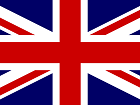الاستيراد والشحن من الصين إلى الولايات المتحدة: دليل كامل
هل تخطط لاستيراد منتجات من الصين إلى الولايات المتحدة؟ يوفر هذا الدليل معلومات أساسية للشركات الأمريكية حول استيراد السلع الاستهلاكية من الصين ودول آسيوية أخرى. نحن نغطي لوائح المنتجات الأمريكية ومتطلبات وضع العلامات والشحن وتكاليف الاستيراد.
يجيب هذا الدليل على أسئلتك حول الشحن من الصين إلى الولايات المتحدة الأمريكية ، بما في ذلك:
-
لوائح سلامة المنتج
-
متطلبات وضع العلامات
-
لوائح الشحن
-
الجمارك والضرائب
لوائح سلامة المنتج: التنقل في الامتثال للولايات المتحدة
يجب على المستوردين الأمريكيين الالتزام بكليهما:
-
اللوائح الاتحادية: قابل للتطبيق على الصعيد الوطني.
-
لوائح الدولة: خاصة ببعض الدول.
لنبدأ باللوائح الفيدرالية. فيما يلي نظرة عامة على الوكالات واللوائح الرئيسية:
أ. CPSIA (قانون تحسين سلامة المنتجات الاستهلاكية):
-
ما ينظمه: ألعاب ومنتجات الأطفال (أقل من 12 سنة).
-
الجوانب الرئيسية: إطار عمل لمعايير المنتج (الرجوع إلى ASTM وغيرها) ، والاعتماد ، والتوثيق ، ووضع العلامات.
-
مهم: CPSIA ليس معيارا بحد ذاته ولكنه يشير إلى معايير مثل ASTM.
ب. لجنة الاتصالات الفيدرالية (FCC):
-
ما ينظمه: أجهزة الاتصال المباعة في الولايات المتحدة.
-
الجوانب الرئيسية: يدير لوائح مثل FCC الجزء 15 للإلكترونيات.
ج. FFA (قانون الأقمشة القابلة للاشتعال):
-
تديرها: CPSC (لجنة سلامة المنتجات الاستهلاكية).
-
ما ينظمه: قابلية الأقمشة للاشتعال.
-
الجوانب الرئيسية: يتطلب شهادات المنتج والوثائق لمنتجات النسيج.
د. المواد المحظورة:
-
ينظم: CPSC ، في المقام الأول بموجب CPSIA.
-
ما ينظمه: قيود على بعض المواد في المنتجات ، بما في ذلك بعض العناصر غير الخاصة بالأطفال.
-
ابحث عن القائمة: [رابط إلى قائمة المواد المحظورة CPSC] (يرجى إدراج الرابط الفعلي هنا)
-
مسؤولية المستورد: تأكد دائما من امتثال منتجاتك لل كل لوائح السلامة المعمول بها.
لوائح الدولة: الاعتبارات الرئيسية
بالإضافة إلى القواعد الفيدرالية ، تؤثر لوائح الولاية أيضا على المستوردين. فيما يلي أمثلة مهمة:
أ. اقتراح كاليفورنيا 65 (CA Prop 65):
-
ما ينظمه: أكثر من 800 مادة كيميائية في المنتجات الاستهلاكية.
-
خيارات الامتثال:
-
الخيار 1: ضمان الامتثال: الحصول على وثائق من الشركة المصنعة أو إجراء الاختبارات المعملية. (غالبا ما يكون الاختبار المعملي ضروريا).
-
الخيار 2: ملصق التحذير: ألصق ملصق يفيد بأن المنتج قد يحتوي على مواد يمكن أن تسبب السرطان أو الضرر التناسلي.
-
-
إلزامي ل: المستوردون المقيمون في كاليفورنيا أو يبيعون إليها.
-
الشركات الصغيرة: حتى الشركات التي يقل عدد موظفيها عن 10 موظفين غالبا ما تتأثر بسبب متطلبات السوق ومتاجر التجزئة.
ب. نشرة كاليفورنيا الفنية 117-2013 (TB117-2013):
-
ما ينظمه: السلامة من الحرائق للأثاث المنجد.
-
إلزامي ل: تباع بعض الأثاث المنجد في كاليفورنيا.
ج. لوائح الدولة الأخرى:
-
تفرض العديد من الولايات قيودا محلية على المواد (على سبيل المثال ، حظر الفثالات) ، والتعبئة ، وقواعد الإبلاغ.
-
فعل: اتصل بالسلطات المحلية واطلب المشورة القانونية لضمان الامتثال في الولايات المستهدفة.
متطلبات وضع العلامات: العلامات الأساسية للواردات الأمريكية
إلى جانب السلامة ، فإن وضع العلامات المناسبة إلزامي. تختلف المتطلبات حسب المنتج، ولكن فيما يلي إرشادات عامة:
-
منتجات الأطفال:
-
ملصق التحذير
-
تسمية تتبع CPSIA
-
بلد المنشأ
-
-
إلكترونيات:
-
علامة لجنة الاتصالات الفيدرالية (FCC)
-
بلد المنشأ
-
-
الملابس:
-
تكوين الألياف
-
تعليمات العناية
-
تحذير القابلية للاشتعال
-
بلد المنشأ
-
-
التغليف:
-
ملصق التحذير
-
بلد المنشأ
-
وضع العلامات على بلد المنشأ: "صنع في الصين"
-
إلزامي ل: معظم المنتجات المستوردة من الصين إلى الولايات المتحدة الأمريكية.
-
علامة كافية: عادة ما تكون عبارة "صنع في الصين" على المنتج أو العبوة كافية.
-
الاستثناءات: توجد قواعد محددة لبعض المنتجات (على سبيل المثال ، الساعات - الأصل على أساس الحركة وليس التجميع).
-
ملاحظة الجودة: "صنع في الصين" لا يعني الجودة المنخفضة. الجودة تعتمد على إدارة التصنيع.
المعايير والجمعيات غير الإلزامية: تعزيز الثقة في المنتج
على الرغم من أن هذه المنظمات ليست مطلوبة قانونا ، إلا أنها تضع معايير محترمة:
-
مختبرات التأمين (UL): www.ul.com
-
الجمعية الأمريكية للاختبار والمواد (ASTM): www.astm.org
-
المعهد الوطني الأمريكي للمعايير (ANSI): www.ansi.org
-
تأثير: قد تشير الوكالات الفيدرالية مثل CPSC إلى هذه المعايير (على سبيل المثال ، CPSIA التي تشير إلى ASTM F963 للألعاب).
-
مثال: Hoverboards: أعلنت CPSC أن ألواح التزلج يجب أن تفي ب UL 2272 ، مما يجعل المعيار غير الإلزامي إلزاميا فعليا لفئة المنتجات هذه.
-
مهم: CPSC لا يتطلب UL شهادهفقط امتثال مع المعيار.
الشحن: اللوائح والاعتبارات
لوائح النقل:
-
1. مواد التعبئة والتغليف الخشبية: يجب أن يمتثل للمعيار الدولي للآفات رقم 15 (ما لم يكن معفا) لمنع انتشار الآفات.
-
2. بطاريات الليثيوم: قواعد تغليف وتوثيق صارمة بسبب مخاطر الحريق.
الجمارك والضرائب: شرح تكاليف الاستيراد
-
رسوم الاستيراد: تخضع معظم الواردات من الصين إلى الولايات المتحدة للرسوم.
-
عوامل معدل العمل:
-
رمز النظام المنسق: رمز تصنيف المنتج.
-
بلد المنشأ: الصين.
-
-
حساب: عادة نسبة مئوية من القيمة الجمركية. بعض المنتجات لها معدلات مئوية بحد أدنى / أقصى حدود.
-
-
المعرف الضريبي (EIN):
-
مطلوب ل: بلغت قيمة الواردات أكثر من 2,500 دولار.
-
صادر عن: مصلحة الضرائب (دائرة الإيرادات الداخلية) للمواطنين والشركات الأمريكية.
-
مطلوب ل: المخلص الجمركي والإدخال الرسمي.
-
-
رسوم معالجة البضائع (MPF):
-
ينطبق على: الشحنات الجوية والبحرية.
-
بناء على: قيمة البضائع.
-
معدل: 0.3464٪ بحد أدنى 25 دولارا أمريكيا والحد الأقصى 485 دولارا أمريكيا.
-
-
رسوم صيانة الميناء (HMF):
-
ينطبق على: شحنات الشحن البحري.
-
معدل: 0.125٪ من قيمة البضائع (لا يوجد حد أدنى / كحد أقصى).
-
القيمة الجمركية: حساب قاعدة رسوم الاستيراد
-
تعريف: "قيمة المعاملة" - السعر المدفوع مقابل البضائع تباع للتصدير إلى الولايات المتحدة, زائد تكاليف معينة.
-
الحد الأدنى للقيمة: قيمة FOB (مجاني على متن الطائرة).
-
يستبعد: تكاليف الشحن الدولي (على عكس القيمة الجمركية للاتحاد الأوروبي).
-
يتضمن "التمريرات الحاجزة" المحتملة:
-
تكاليف التعبئة
-
عمولات البيع
-
قيمة "المساعدات" (الأدوات ، القوالب ، خدمات التصميم ، العينات المقدمة للشركة المصنعة)
-
الإتاوات / رسوم الترخيص
-
عائدات إعادة البيع التي تفيد البائع
-
-
فعل: الإعلان عن المساعدة للجمارك الأمريكية.
المخلص الجمركي: ميسر الاستيراد الخاص بك
-
دور: ملفات الإدخالات والمستندات لدى الجمارك الأمريكية نيابة عنك.
-
وكيل الشحن مقابل الوسيط: يعمل العديد من وكلاء الشحن أيضا كوسطاء ، لكنهم يؤكدون ذلك.
-
احتياج: إشراك مخلص جمركي قبل استيراد.
-
السند الجمركي: يمكن للوسيط مساعدتك في الحصول على السندات الجمركية.
-
توكيل: مطلوب لتفويض الوسيط للتصرف نيابة عنك.
السندات الجمركية: ضمان الامتثال
-
قصد: يضمن دفع الرسوم والضرائب للجمارك الأمريكية.
-
انواع:
-
سند دخول واحد: لشحنة واحدة.
-
سند الدخول المستمر: لشحنات متعددة على مدى فترة (على سبيل المثال ، سنة واحدة).
-
-
إلزامي عندما: السلع التي تبلغ قيمتها 2,500 دولار أمريكي أو أكثر (دخول رسمي).
-
توقيت: سند الشراء قبل البضائع تغادر ميناء المنشأ.
-
احصل على خلال: المخلص الجمركي الخاص بك.
-
المعلومات المطلوبة: المعرف الضريبي ، توكيل.
من أجل خدمة شحن شاملة خالية من المتاعب من الباب إلى الباب من الصين إلى الولايات المتحدة الأمريكية، UCS هي شريكك المثالي ، احصل على عرض أسعار للشحن منا اليوم.

 English
English Spanish
Spanish Arabic
Arabic